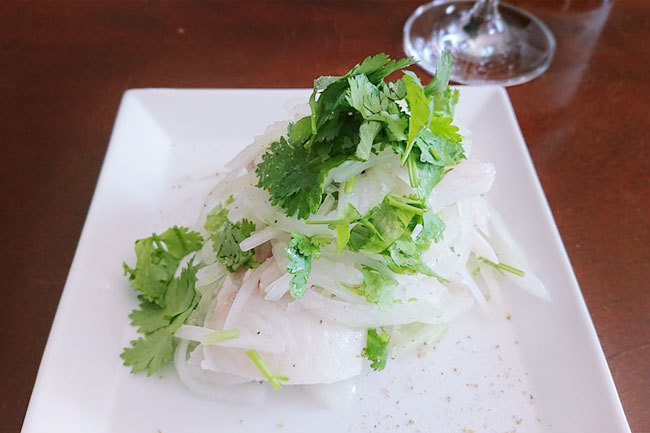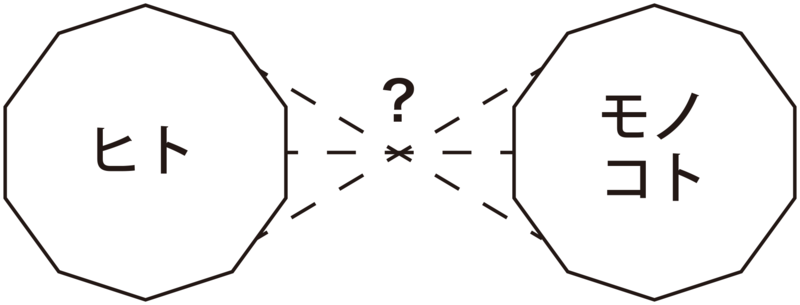This year's Meiji Gakuin University lectures, all 15 sessions, have concluded. I'm sure the students are now thoroughly enjoying their long, long summer break. Come to think of it, a quarter-century ago, I used that time to go backpacking too.
Among the dishes I encountered during that budget trip, Chile's "ceviche" left a particularly strong impression. With the Pacific Ocean stretching along its entire western coast, seafood was delicious everywhere I went.
The recipe I heard locally was "just marinate raw white fish, onion, and garlic in lemon juice, salt, and pepper, then mix in Italian parsley." I tried recreating it many times after returning home, but I just couldn't get "that flavor." It took me quite a while to realize that what was needed was coriander (shantzai), with its stronger aroma, rather than Italian parsley.

My first ceviche in ages—absolutely perfect with ice-cold white wine!
Now then. My "Special Topics in Management" class was a time to think with everyone about how to spark innovation. There, we utilize "problems with no single correct answer," known in the advertising industry as "creative tests."
This year, we posed questions like: "How can we get more people to use fountain pens?", "Come up with an idea that makes people want to bungee jump!", and "What can we do to make the Paralympics more exciting?".
This marks my eighth year teaching at the university. Naturally, I've come to understand the points where students tend to stumble. One of these is that "Creative Test problems never explicitly say 'think about the target audience.'"
As I've covered in this column before, there's only one thing to focus on with these open-ended problems: finding new connections between people and things/concepts. Students diligently prepare beforehand, researching topics like "fountain pens," "bungee jumping," or "the Paralympics" to some extent. But because the problem statement never mentions the target audience, they barely pay any attention to the "people" aspect.
For instance, this year, one student diligently gathered a somewhat dubious piece of information: "The top speed of bungee jumping is almost the same as that of a tuna." Acquiring such overlooked aspects related to "things and events" broadens the possibilities for generating ideas. However, perhaps lacking sufficient time to consider "people," the proposal ultimately stopped at "swimmers using bungee jumping as training to get accustomed to speed."
The student themselves felt deep down that it wasn't a great idea. After jumping directly from "things and events" to "people," they didn't know how to proceed and ended up stuck.


Meiji Gakuin University
In this case, having recognized "bungee jumping as training to get used to speed," one might then wonder, "Did swimmers really need to overcome such fear of speed?" and perhaps think of "F1 racers" or "table tennis players" who need dynamic visual acuity. Then, to turn that into a "thing or action" that solves that person's problem, you might conceive of a system where you answer simple equations (like "5+3=") while bungee jumping.
You'd keep bouncing back and forth between "people" and "things/ideas." To get those "Oh, that's how it works!" ideas, you need this kind of thinking.
Actually, this isn't limited to small tests at ad agencies. Many problems we encounter in the world—like "I want to expand sales of ●● beverage" or "I want to be more popular!"—lack any hint of the "target" within the statement itself. So, while this column is certainly aimed at students aspiring to work in advertising, I also hope it resonates with a wider audience of business professionals. What did you think?
Well then, next time we'll talk about the "final exam" I assigned at the end of that lecture.
Enjoy!









